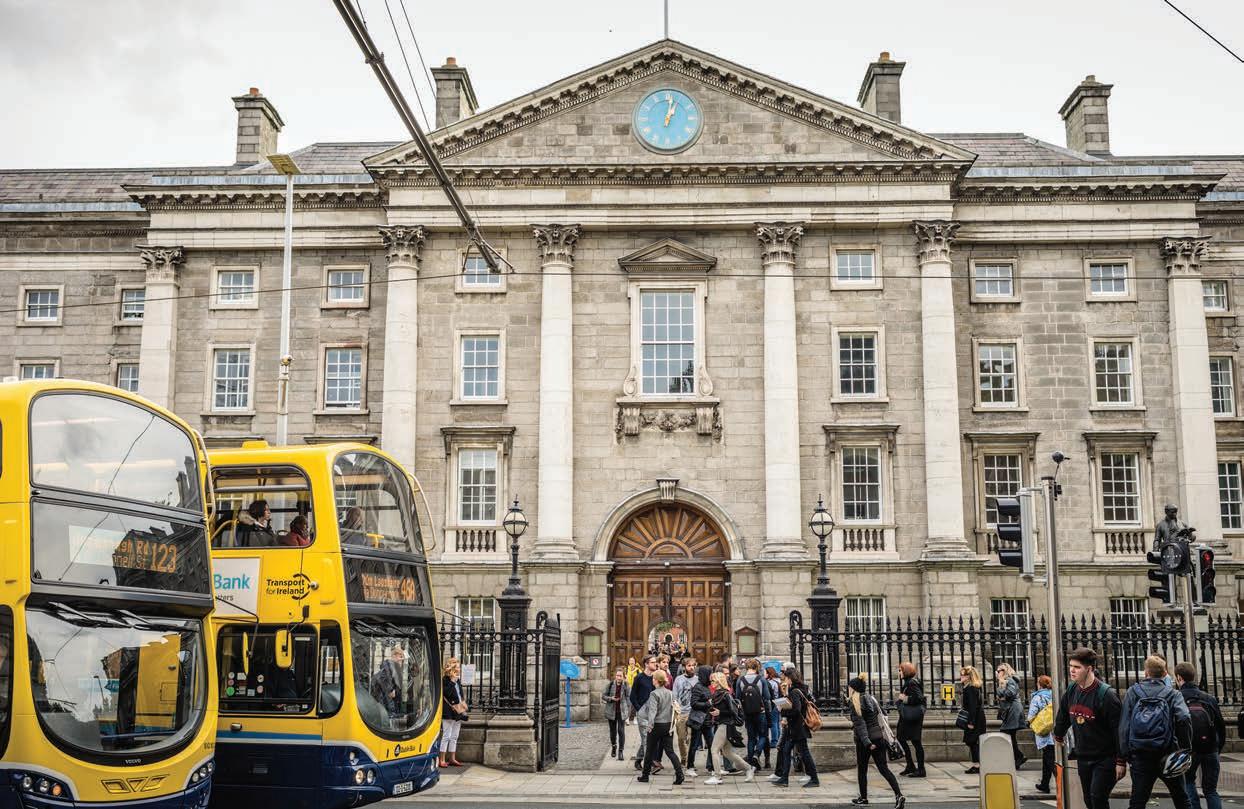
3 minute read
IS GEOGRAPHY A BARRIER TO EDUCATION?
from Spring 2020 Bulletin
by SVP Ireland
By Marcella Stakem, Social Justice Research and Policy Officer
Participating in Higher Education is an important policy objective in Ireland. However, we continue to see persistent social inequality in higher education with low-income households being one of the named groups not to participate at levels experienced by their more advantaged peers. SVP members see this reality through home visitation and the administration of SVP Education Bursary schemes for Further and Higher Education. One of the reasons members cite for the under-representation of low-income households in Higher Education are inadequate financial supports through the SUSI grant, this is more apparent for students who have to travel by car or public transport to their chosen place of study.
Advertisement
The maintenance grant is provided to assist with a student’s day to day living expenses. It is calculated at two rates: adjacent and non-adjacent, depending on the distance between a student’s home and college. The adjacent rate is payable if the student’s home is determined by the awarding authority to be 45km or less from the approved institution they are attending. The nonadjacent rate is payable in all other cases. The non-adjacent grant rate was changed from 24km to 45km in Budget 2011 which has had a significant impact on households which SVP support.
To qualify for the highest level of support from SUSI; the special grant rate, last year’s household income should be under €24,000 and at least one member of the household is dependent on social welfare. Where the student is eligible for the non-adjacent payment and on the special rate, they
will receive maintenance of €658 per month. Just over 12% of students who applied for a grant received the maximum amount possible in 2018. The highest rate does not cover costs for students if living away from home, which is the only option for many if they wish to pursue educational opportunities.
Over 80% of students from Cavan, Mayo, Wexford, Longford, Roscommon, Monaghan, Leitrim, Laois and Offaly travel more than 45km to go to college and are therefore eligible for the non-adjacent SUSI rate.
A study in 2013 examined the impact of travel distance on higher education participation, it showed that travel distance has a negative impact on the likelihood of school leavers from lower-socio economic backgrounds proceeding to higher education.
For every extra 10 kilometres of travel distance, the likelihood of participation decreased by 2.7%. Thus, for a school leaver living 50 kilometres from a Higher Education Institute, their probability of higher education participation is lowered by 13.5% than if they lived next to the Higher Education Institute. This is most likely because the greater travel distances result in a range of higher direct and indirect costs and the impact of these distance-related costs on participation is likely to be more pronounced for those on lower incomes.
Monthly Cost of Living Expenses 2019-2020 NUI Galway
Expense
Rent (private rented) Bills (phone, electricity, internet) Food Clothes/Laundry Books/study materials/printing Recreation Travel Heating/Oil Monthly Total Academic Year Total Cost
€540 €90 €220 €50 €40 €160 €40 €15 €1155 €10,395
Source: http://www.nuigalway.ie/student-life/accommodation/ financial-matters/cost-of-living/
Those students who do commute from home to college are not commuting by choice according to SVP members, but due to the high accommodation costs in cities and towns. The Chairperson of the Psychological Counsellors in Higher Education has stated that students who are commuting long distances are experiencing exhaustion and isolation which is impacting on their attendance levels and academic performance. Along with the emotional and physical cost of commuting, there is also the financial cost. An average commute for students can cost upwards of €200 per month and this is on travel expenses alone. SVP works closely with thousands of students to support their access to further and higher education, and strongly believe that equality of opportunity, progression and outcome must be the central goals of our education system. Equity in access to higher and further education is broadly social, cultural, geographic and economic. A commitment to annual increases to the student grant and reducing the 45km non-adjacent grant rate to the previous distance of 24km would be important first steps in ensuring low income households can participate in higher education if they wish to do so. Until such a time as this occurs, SVP will continue to highlight the inequality that persists in our Higher Education system.










